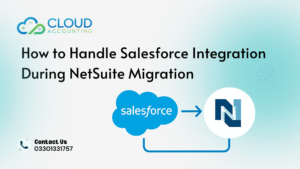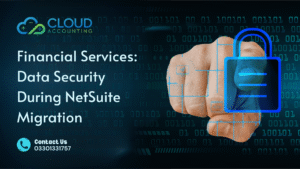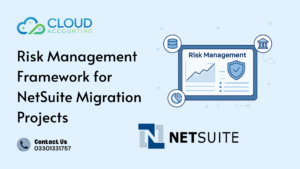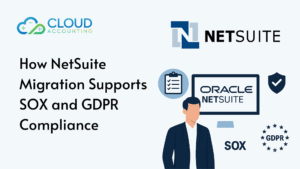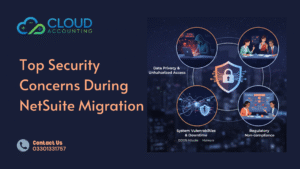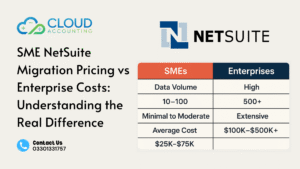When finance teams plan a system upgrade, compliance is often their biggest concern. Moving sensitive financial data to a new ERP platform isn’t just a technical task — it’s a regulatory responsibility. That’s where NetSuite Migration Compliance becomes critical.
In today’s environment, businesses must meet strict standards like SOX (Sarbanes–Oxley Act) and GDPR (General Data Protection Regulation). Both demand transparency, security, and accountability in how financial and personal data is handled. A poorly executed migration can expose your business to audit failures, data breaches, or even legal penalties.
By migrating to Oracle NetSuite, organizations gain built-in tools and controls designed to uphold these standards. From encrypted data handling to detailed audit trails, NetSuite offers the framework needed to maintain compliance through every stage of the migration journey. For CFOs and compliance officers, that means peace of mind — and a stronger foundation for future audits.
Understanding SOX and GDPR — What They Mean for Your Business
Before diving into NetSuite Migration Compliance, it’s important to understand why SOX and GDPR matter so much in the first place.
The Sarbanes–Oxley Act (SOX) was introduced to protect investors by improving the accuracy and reliability of corporate disclosures. For accounting and finance teams, SOX compliance means strict controls over financial reporting, audit trails, and system access. Every change in financial data must be traceable — right down to who made it and when.
The General Data Protection Regulation (GDPR), on the other hand, governs how businesses collect, store, and use personal data within and outside the EU. GDPR compliance requires clear consent management, strong data security, and the ability to delete or export data upon request.
These regulations share a common theme: data integrity and accountability. That’s exactly where NetSuite Migration Compliance comes in. By migrating to a platform like NetSuite, businesses can centralize financial and personal data in a system that’s designed with compliance built into its core architecture. This not only helps meet SOX and GDPR requirements but also builds trust with auditors, regulators, and customers alike.
The Role of NetSuite Migration in Compliance Readiness
When businesses migrate to a new ERP system, compliance readiness often becomes the deciding factor between a smooth transition and a regulatory headache. The goal of NetSuite Migration Compliance isn’t just to move data safely — it’s to strengthen governance and control at every stage of the process.
NetSuite provides built-in frameworks that support data accuracy, traceability, and accountability — all essential pillars for SOX and GDPR compliance. Every transaction, adjustment, and approval can be logged and reviewed, making it easier for auditors to verify financial integrity.
For example:
- Automated audit trails record user actions across all financial modules.
- Role-based access controls ensure that sensitive data is only visible to authorized users.
- Encryption and permission settings protect confidential data both in transit and at rest.
During migration, these features are crucial. They help prevent unauthorized changes, maintain data consistency, and demonstrate control over your financial systems — all core elements of compliance readiness.
In short, NetSuite Migration Compliance ensures that your move to the cloud isn’t just about upgrading technology. It’s about enhancing the transparency and security of your financial data, helping your organization stay audit-ready from day one.
Data Integrity and Audit Trails — The Heart of SOX Compliance
For SOX-regulated businesses, maintaining data integrity isn’t optional — it’s a legal requirement. When migrating to a new ERP system, every transaction, adjustment, and financial report must remain accurate and traceable. That’s why NetSuite Migration Compliance plays such an essential role in meeting SOX standards.
NetSuite’s structure is designed to protect the integrity of financial data. Every entry is automatically timestamped and linked to a specific user ID. This ensures complete transparency for auditors and finance leaders who need to verify the origin and accuracy of financial information.
Key SOX-supporting features within NetSuite include:
- Comprehensive audit trails – Every data change is tracked, including who made it and when.
- Role-based permissions – Access to financial records is limited based on job function, reducing the risk of unauthorized edits.
- Approval workflows – Built-in controls ensure financial transactions are reviewed and approved before they’re finalized.
- Segregation of duties – Critical to SOX, NetSuite makes it easy to separate responsibilities between users handling data entry, review, and approval.
When executed properly, NetSuite Migration Compliance ensures these safeguards remain intact during and after migration. At Cloud Accounting, we focus on preserving every audit log and control setting throughout the process, so businesses can maintain uninterrupted compliance with SOX Section 404 — the gold standard for internal controls over financial reporting.
GDPR Compliance — Protecting Personal Data During and After Migration
While SOX focuses on financial reporting, GDPR centers on privacy — specifically, how businesses manage personal data belonging to EU residents. During an ERP transition, even a small oversight can expose sensitive information and result in major penalties. This is where NetSuite Migration Compliance becomes a vital safeguard.
Migrating to NetSuite offers a structured way to handle personal data with transparency, consent, and security. The platform’s design supports the core principles of GDPR, including data minimization, lawful processing, and the right to erasure.
Here’s how NetSuite helps maintain GDPR compliance before, during, and after migration:
- Data Mapping & Classification – Identifies and categorizes personal data, ensuring proper handling during migration.
- Encryption & Secure Transfer – Protects all personal and financial information while data moves between systems.
- Access Control & Consent Management – Limits data visibility to approved users and tracks consent for data usage.
- Retention Policies – Automates deletion schedules to comply with GDPR’s “right to be forgotten.”
- Audit Logs & Reporting – Maintains a verifiable record of how and when data is processed or changed.
By implementing a carefully managed NetSuite Migration Compliance plan, organizations can ensure data privacy obligations are met at every step. For businesses handling customer or employee data across regions, this means a smoother audit trail and reduced legal exposure.
At Cloud Accounting, we help companies align their migration approach with both GDPR and internal data protection policies — ensuring that moving to NetSuite doesn’t just modernize operations, but also strengthens privacy compliance from the ground up.
Common Compliance Risks During Migration (and How to Avoid Them)
Every system migration carries some level of risk, but when regulatory standards like SOX and GDPR are involved, the stakes get much higher. A single data handling mistake can trigger costly audits or compliance failures. That’s why a well-structured NetSuite Migration Compliance plan is crucial for protecting both financial integrity and data privacy.
Here are the most common compliance risks businesses face during migration — and how to prevent them:
1. Unsecured Data Transfers
Migrating large volumes of financial and personal data often involves temporary storage or third-party tools. If those channels aren’t encrypted, sensitive data could be exposed.
Solution: Use encrypted transfer protocols (SSL/TLS) and verified migration tools approved for NetSuite.
2. Missing or Incomplete Audit Trails
Data lost in transit or transformed without documentation breaks the audit chain, creating SOX compliance gaps.
Solution: Maintain detailed migration logs and test all control points to confirm traceability.
3. Incorrect User Permissions
Reassigning roles and access rights during migration can introduce privilege errors, allowing unauthorized access.
Solution: Apply NetSuite’s role-based permissions early in the migration and verify them after import.
4. Outdated Data Policies
GDPR compliance requires up-to-date data retention and privacy policies. Migrating legacy data without reviewing these can lead to violations.
Solution: Review and align your retention policies with current GDPR standards before migration begins.
5. Inadequate Testing and Validation
Without a post-migration validation phase, businesses risk inaccurate data, audit inconsistencies, or privacy issues.
Solution: Conduct end-to-end testing — financial reconciliation, access audits, and compliance reporting — before going live.
When managed with care, NetSuite Migration Compliance prevents these issues from derailing your migration project. At Cloud Accounting, we combine compliance-first planning with real-world ERP migration expertise — ensuring that every move to NetSuite meets not only your business goals but also your regulatory obligations.
Cloud Accounting’s 4-Step NetSuite Migration for Compliance-Focused Businesses
Migrating to NetSuite isn’t just about data transfer — it’s about preserving accuracy, security, and regulatory confidence from start to finish. At Cloud Accounting, we’ve developed a proven 4-step process to ensure every project aligns with NetSuite Migration Compliance standards for SOX and GDPR.
Step 1: Assess – Define Your Compliance Baseline
We start by reviewing your current ERP environment and compliance requirements. Our team identifies the controls, data categories, and reporting rules needed for SOX and GDPR alignment. This assessment phase helps us create a tailored compliance checklist before any data moves.
Step 2: Prepare – Map, Secure, and Validate Data
Next, we prepare your financial and personal data for migration. This includes data mapping, cleansing, and setting up encryption protocols. We verify that all permissions, audit logs, and access controls are properly structured to meet NetSuite Migration Compliance expectations.
Step 3: Migrate – Transfer Data with Full Audit Traceability
During migration, every transaction, record, and metadata entry is logged for traceability. We use verified tools to migrate financials, customer details, and configuration data securely into NetSuite — maintaining encryption and full audit visibility at each step.
Step 4: Verify & Support – Confirm Compliance Post-Migration
After the migration, we validate your new NetSuite environment through extensive reconciliation and compliance checks. We confirm that audit trails, access roles, and retention settings meet both SOX and GDPR requirements. Ongoing support ensures your system stays compliant as regulations evolve.
Why Compliance-Focused Businesses Choose Cloud Accounting
When compliance is non-negotiable, you need more than just migration experts — you need specialists who understand how financial systems intersect with regulation. That’s what makes Cloud Accounting a trusted partner for NetSuite Migration Compliance projects.
We don’t treat compliance as an afterthought. It’s built into every stage of our process, from initial scoping to post-migration validation. Our migration specialists combine deep ERP expertise with hands-on knowledge of SOX and GDPR standards, giving businesses the confidence that every control, log, and permission is properly maintained.
Here’s what sets Cloud Accounting apart:
- Compliance-First Approach – Every project starts with a risk assessment focused on regulatory requirements.
- Certified NetSuite Experts – Our team is trained to handle complex NetSuite migrations with full audit transparency.
- Data Security Assurance – Encryption, validation, and multi-layer protection come standard in all migrations.
- Audit-Ready Documentation – We deliver detailed migration and compliance reports for internal and external audits.
- Proven Track Record – Dozens of successful NetSuite migrations completed for finance-driven organizations across the UK, EU, and UAE.
In short, Cloud Accounting isn’t just a service provider — we’re your compliance ally. From data integrity to regulatory assurance, our NetSuite Migration Compliance expertise ensures your business can face its next audit with confidence.
Final Thoughts: Building Compliance into Every NetSuite Migration
In a world of ever-tightening regulations, businesses can’t afford to treat compliance as a checkbox exercise. Whether it’s SOX demanding financial transparency or GDPR enforcing data privacy, compliance must be built into your ERP strategy — not added afterward. That’s exactly what NetSuite Migration Compliance delivers.
Migrating to NetSuite is more than a system upgrade — it’s a chance to improve how your organization manages data, security, and accountability. By adopting a compliance-first approach, you reduce audit risk, strengthen internal controls, and demonstrate trust to clients and regulators alike.
At Cloud Accounting, we combine ERP migration expertise with a deep understanding of SOX and GDPR. Our compliance-focused process ensures that your transition to NetSuite doesn’t just move data — it enhances governance and long-term peace of mind.
If you’re ready to migrate with confidence, backed by experts who understand both the technology and the regulation, we’re here to help.
Talk to our NetSuite migration specialists today and see how Cloud Accounting can deliver a secure, compliant, and fully verified migration from your current system to NetSuite.


